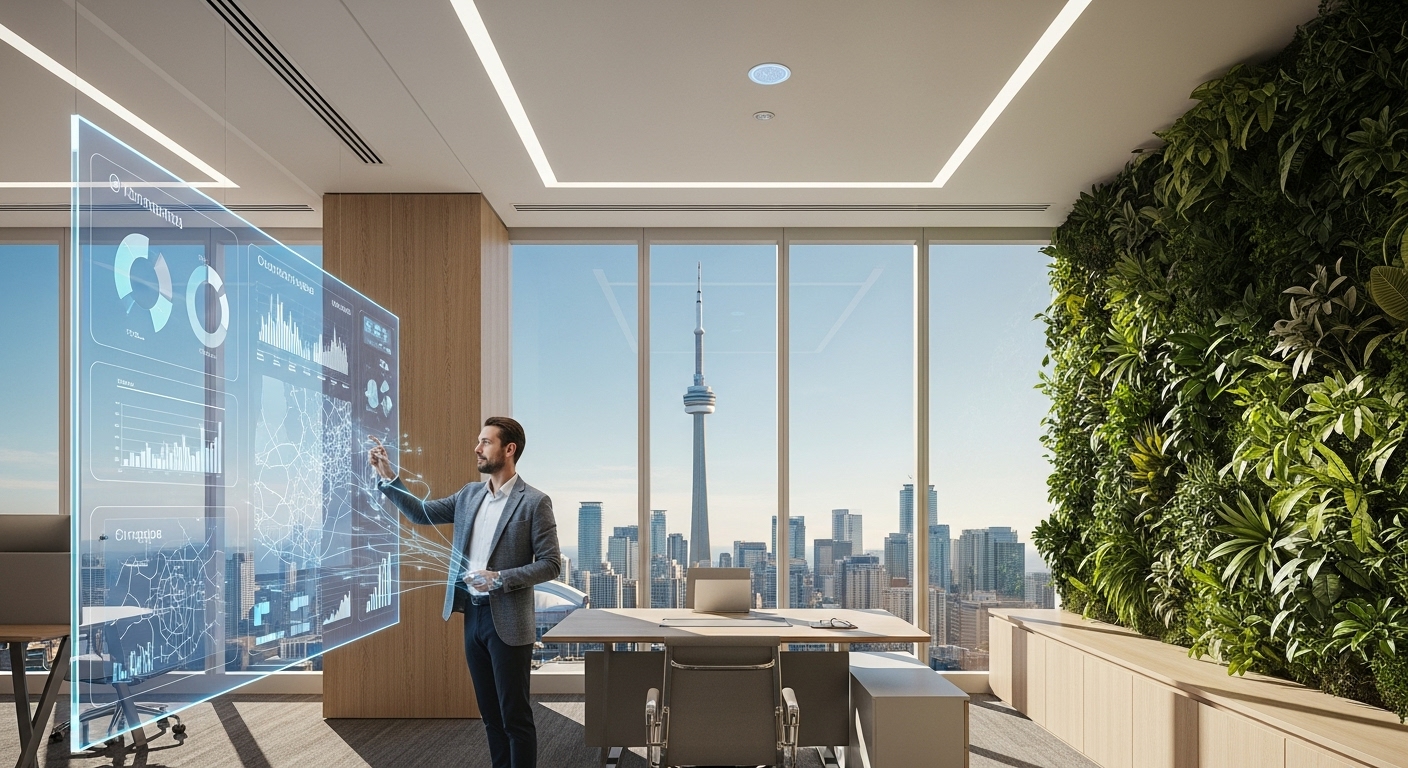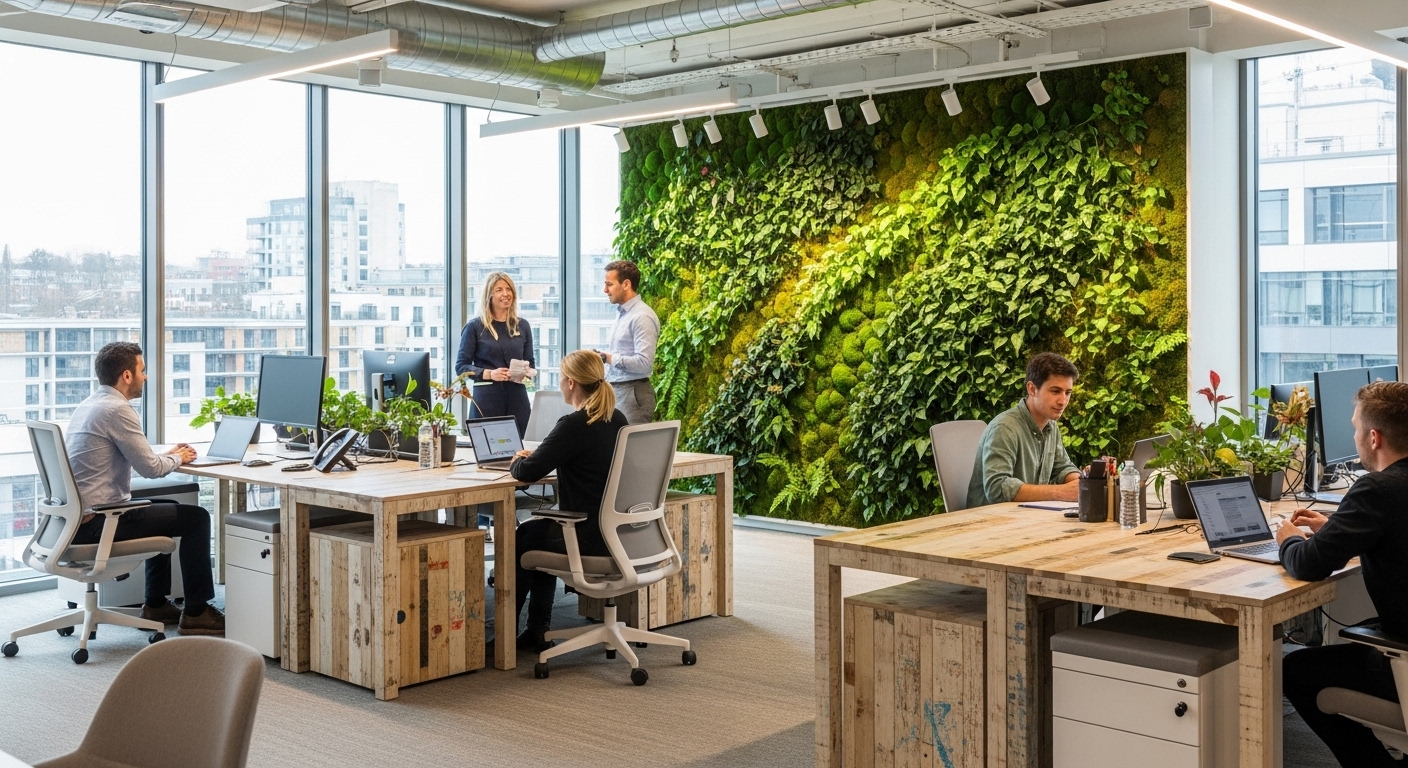The traditional office is a relic. In the wake of a global shift towards hybrid work, the role of the physical workspace has been fundamentally redefined. It’s no longer just a place to house desks and computers; it’s a destination for collaboration, innovation, and cultural connection. To meet these new demands, businesses are turning to smart office technology, creating intelligent environments that are responsive, efficient, and human-centric. This evolution from a static floor plan to a dynamic ecosystem is not just a trend but a strategic imperative for attracting and retaining top talent. The future of work is being built today, and it is powered by data, IoT, and a deep understanding of what makes a workforce thrive. This article explores the key pillars of the intelligent workplace, from enhancing employee well-being to driving sustainability, and examines how this technological revolution is taking shape in major global hubs.
The new workplace imperative: Beyond connectivity to intelligence
For years, office technology focused on connectivity—faster internet, better video conferencing, and seamless cloud access. While essential, this is now merely the baseline. The intelligent workplace goes a step further by creating an integrated ecosystem of Internet of Things (IoT) devices. This network of sensors, smart appliances, and building management systems generates a constant stream of data about how the office is being used. Imagine an environment where the lighting adjusts based on natural light levels and occupancy, where meeting rooms are automatically released if no one shows up, and where air quality is continuously monitored and optimized. This isn’t science fiction; it’s the reality of a truly smart office. The core principle is moving from a reactive to a proactive model. Instead of employees having to adapt to the building, the building adapts to its occupants. This shift is powered by sophisticated analytics and artificial intelligence that interpret data patterns to make real-time adjustments, creating a frictionless experience that allows employees to focus on high-value work rather than logistical hurdles. The goal is to build a central nervous system for the office, one that understands occupancy flows, energy consumption, and environmental conditions to create a workspace that is not just connected, but genuinely intelligent and responsive.
Enhancing employee well-being with responsive environments
The conversation around the future of work is increasingly focused on employee well-being, and smart technology is a critical enabler of this human-centric approach. A responsive environment can significantly reduce stress and improve health. One of the most impactful technologies is smart lighting. Human-centric lighting systems can mimic the natural progression of sunlight throughout the day, regulating employees’ circadian rhythms, which can improve sleep quality, mood, and focus. Similarly, smart HVAC systems offer personalized climate control, allowing for temperature zones that cater to different preferences and eliminating the proverbial office thermostat wars. Beyond comfort, these systems actively monitor and manage air quality, tracking levels of CO2, volatile organic compounds (VOCs), and humidity. When a room becomes stuffy during a long meeting, the system can automatically increase ventilation. This focus on creating a healthier indoor environment has become a major priority, especially in dense urban centers. By using technology to tailor the physical space to individual and collective needs, companies can demonstrate a tangible commitment to their team’s health, making the office a place where people feel cared for and can perform at their best. This is a powerful tool for talent retention in a competitive market.
Optimizing space and energy in the hybrid era
The rise of hybrid work has created a significant challenge for facilities managers: how to manage a workspace with fluctuating daily occupancy. An office that is 80% full on Tuesday might be only 20% full on Friday. Smart technology provides the tools to manage this variability efficiently. Occupancy sensors are the cornerstone of space optimization. They provide real-time data on which desks, rooms, and common areas are being used. This information feeds into user-friendly apps that allow employees to find and book available hot desks or meeting rooms before they even arrive. This eliminates the frustration of searching for a place to work and provides valuable analytics for companies. If the data shows that smaller collaboration pods are constantly in use while large boardrooms sit empty, leadership can make informed, data-driven decisions about reconfiguring the office layout. This intelligence extends directly to energy savings. There is no need to heat, cool, or light empty sections of a building. Smart systems can automatically power down services in unused areas, drastically reducing energy consumption and operational costs. For businesses in a competitive real estate market like Toronto, using technology to maximize the efficiency of every square foot is not just a green initiative but a crucial financial strategy.
The power of data: From analytics to actionable insights
At its core, a smart office is a data-generating machine. Every interaction—from swiping a security badge to booking a room or adjusting a thermostat—creates a data point. The true power of the intelligent workplace lies in the ability to aggregate and analyze this data to uncover actionable insights that drive continuous improvement. For example, by analyzing meeting room usage patterns, a company might discover that cross-departmental collaborations are happening most frequently in specific zones, prompting them to add more whiteboards or informal seating in those areas to further encourage synergy. Anonymized movement patterns can reveal bottlenecks in the office layout, helping planners design more efficient and intuitive circulation paths. Data can also revolutionize maintenance. Instead of relying on a fixed schedule, sensors on equipment like HVAC units or elevators can predict when a component is likely to fail, enabling predictive maintenance that prevents costly downtime. This data-driven approach transforms workplace management from guesswork into a precise science. It allows organizations to create a feedback loop where the building and its systems are constantly evolving based on the actual behaviors and needs of the people using them, ensuring the workspace remains optimized for productivity, collaboration, and satisfaction over the long term.
Securing the connected office: Navigating new cyber threats
As offices become more connected, they also become more vulnerable. Every IoT sensor, smart lightbulb, and connected printer represents a potential entry point for a cyberattack. Securing the intelligent workplace is a complex but non-negotiable priority. A comprehensive security strategy must go beyond traditional IT firewalls to encompass the entire building network. This starts with network segmentation, isolating the operational technology (OT) network that controls building systems from the information technology (IT) network that handles business data. This prevents a hacker who gains access to a smart thermostat from being able to pivot into the company’s financial servers. Rigorous device management is also critical. All IoT devices must be vetted for security vulnerabilities before deployment, and their firmware must be kept up-to-date with the latest security patches. Strong authentication protocols and end-to-end encryption for all data transmitted between devices and the cloud are essential. As companies in leading tech hubs adopt these advanced systems, the need for robust cybersecurity frameworks becomes paramount. The goal is to build a ‘zero trust’ environment where every device and user must be continuously verified, ensuring that the convenience and efficiency of a smart office do not come at the expense of data security and corporate integrity.
Sustainability as a core driver for smart tech adoption
The push for corporate environmental, social, and governance (ESG) responsibility has become a major catalyst for smart office adoption. Intelligent building technologies are fundamental to creating sustainable workspaces that minimize their environmental footprint. The most significant impact is on energy consumption. Smart HVAC and lighting systems, guided by real-time occupancy data, can reduce a building’s energy use by over 30%. These systems ensure that energy is only consumed when and where it’s needed, eliminating massive waste. Beyond energy, smart technology can optimize water usage and waste management. Smart sensors can detect leaks in plumbing, while smart bins can signal when they are full, optimizing collection routes and reducing fuel consumption for service vehicles. This commitment to sustainability is more than just a matter of compliance or cost savings; it’s also a powerful tool for attracting talent. A growing number of professionals want to work for companies that align with their values. Showcasing a LEED-certified smart office with a low carbon footprint can be a significant differentiator. Cities are also championing these efforts, and many of the smart building initiatives seen in Toronto align with broader municipal goals for a greener urban future, creating a powerful synergy between corporate and civic responsibility.
Ultimately, the transition to intelligent workplaces represents a profound alignment of technology, efficiency, and human experience. It’s a strategic move away from designing offices based on assumptions and toward creating environments that are shaped by real-world data and responsive to the dynamic needs of the modern workforce. By integrating IoT, AI, and data analytics, companies can unlock unprecedented levels of operational efficiency, from optimizing their real estate footprint in the hybrid era to significantly reducing their carbon emissions. More importantly, this technology empowers organizations to place employee well-being at the forefront, crafting healthier, more comfortable, and more engaging spaces. This human-centric focus is the true value proposition of the smart office. As businesses compete for the best talent, the quality of the workplace environment—its intelligence, its responsiveness, its commitment to sustainability—will be a deciding factor. For cities at the forefront of innovation like Toronto, the adoption of smart office technology is not just about upgrading buildings; it’s about building the very foundation of the future of work, ensuring they remain vibrant and competitive centers for global business and talent for decades to come.





